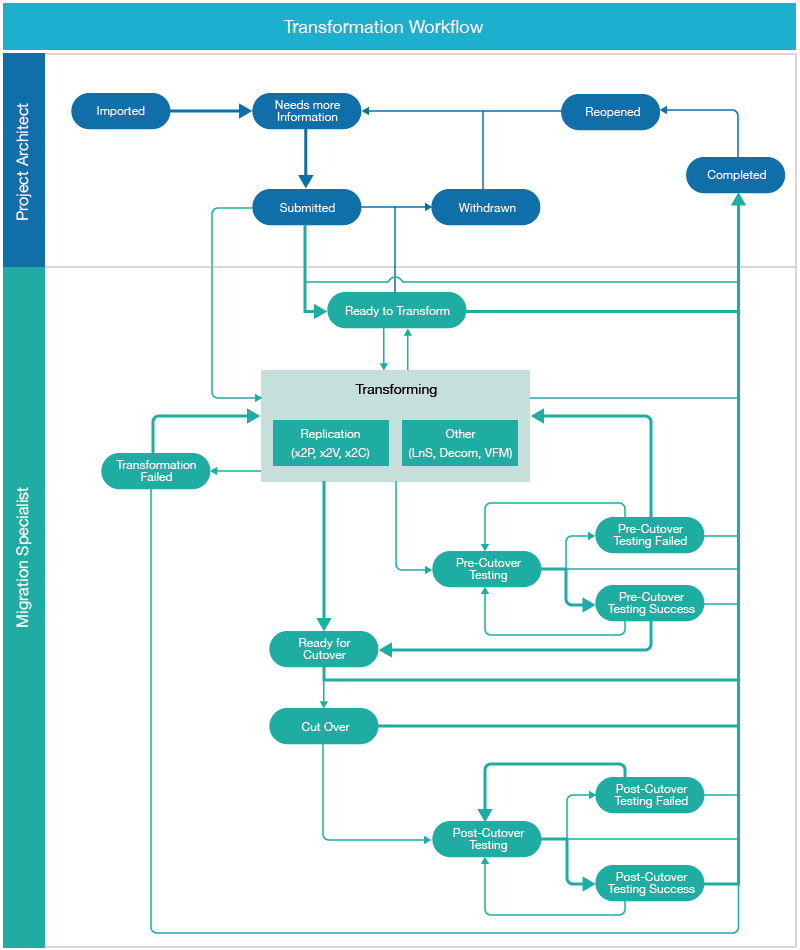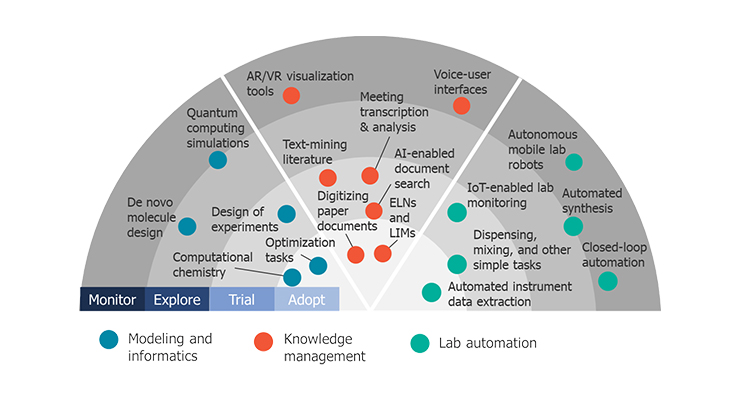From Static Documents to Dynamic Web Experiences: Mastering PDF to Webpage Conversion
Transform your PDFs into responsive, interactive HTML5 experiences that engage users and enhance accessibility
The Evolution of Digital Content Presentation
I've witnessed a remarkable transformation in how we present and consume digital content. The journey from static PDF documents to dynamic, interactive web experiences represents more than just a technical evolution—it's a fundamental shift in how we communicate ideas and engage with our audiences.
In today's digital landscape, businesses and content creators face an increasing demand for flexible content transformation. We're no longer satisfied with rigid, fixed-layout documents that don't adapt to different devices or user needs. The gap between PDF's traditional design philosophy and modern web requirements has never been more apparent.

This is where PageOn.ai's philosophy of "Turn Fuzzy Thought into Clear Visuals" becomes particularly relevant. When we transform documents from PDF to webpage format, we're not just converting file types—we're reimagining how information can be presented, accessed, and understood. Through intelligent visual transformation, complex documents become engaging, accessible web experiences that resonate with modern audiences.
Understanding the PDF to HTML5 Landscape
To effectively convert PDFs to webpages, I believe it's crucial to understand the fundamental differences between these formats. PDF was designed with fixed-layout preservation in mind—every element stays exactly where it was placed, regardless of the viewing device. HTML5, on the other hand, embraces responsive, adaptive content that flows naturally across different screen sizes and orientations.
Format Comparison
| Aspect | PDF Format | HTML5 Format |
|---|---|---|
| Layout | Fixed, pixel-perfect | Responsive, fluid |
| Accessibility | Limited screen reader support | Full WCAG compliance possible |
| Interactivity | Basic forms and links | Rich multimedia and dynamic content |
| SEO | Limited indexing | Full search engine optimization |
Through my research and experience, I've identified several common conversion challenges. Complex layout preservation remains one of the biggest hurdles—maintaining the visual hierarchy and design intent while adapting to responsive web standards. Interactive elements like forms and multimedia content often require special handling to function properly in HTML5.
For those seeking to streamline this process, PageOn.ai's Deep Search feature can automatically find and integrate relevant visual assets during conversion, ensuring that your transformed content maintains its visual appeal while gaining web-native capabilities. This intelligent approach to convert pdf to ppt online and other formats helps bridge the gap between traditional documents and modern web experiences.
Conversion Methods and Tools Overview
Open Source Solutions
I've explored various open-source tools for PDF to HTML conversion, each with its unique strengths and limitations. Calibre, originally designed for e-book management, offers a straightforward approach for basic conversions. While it handles simple documents well, complex layouts often pose challenges.
Open Source Tool Comparison
MuPDF provides a command-line approach that appeals to developers seeking lightweight, fast processing. However, the technical barrier can be significant for non-developers. The command-line interface, while powerful, lacks the intuitive workflow many users expect.
Online Conversion Services
My analysis of online conversion services reveals a spectrum of options, from free tools with basic functionality to professional solutions offering advanced features. Free services like PDF24 and FreeConvert provide quick conversions but often come with upload limits and watermarking. These tools work well for occasional use but may not meet professional requirements.

Professional solutions like FlowPaper and IDRsolutions offer more sophisticated conversion capabilities. They provide interactive viewer options, SEO benefits, and cloud API integration possibilities. When evaluating these tools, I recommend creating comparison matrices using PageOn.ai's Vibe Creation feature to visualize the decision-making process and identify the best fit for your specific needs.
Enterprise and Developer Solutions
For organizations requiring scalable, customizable solutions, server-based conversion systems offer the greatest flexibility. Docker deployment options simplify installation and maintenance, while Java-based implementations provide cross-platform compatibility. API-driven workflows enable seamless integration with existing systems and support batch processing for large-scale conversions.
Enterprise Conversion Workflow
flowchart LR
A[PDF Upload] --> B[API Gateway]
B --> C[Conversion Engine]
C --> D[HTML5 Processing]
D --> E[Quality Check]
E --> F[CDN Distribution]
F --> G[End Users]
style A fill:#FF8000,stroke:#333,stroke-width:2px,color:#fff
style G fill:#66BB6A,stroke:#333,stroke-width:2px,color:#fff
Optimizing Converted Content for Web Performance
HTML5 Enhancement Strategies
Once I've converted a PDF to HTML5, the real work begins. Implementing responsive design ensures the content adapts beautifully to any device. I focus on SEO optimization techniques that preserve and enhance metadata, optimize URL structures, and improve search visibility. Accessibility improvements are crucial—ensuring WCAG compliance opens your content to a wider audience.
Pro Tip: Automated Enhancement
Use PageOn.ai's Agentic processes to automatically transform raw HTML into polished web experiences. The platform's AI can identify areas for improvement and apply enhancements that would typically require hours of manual work.
Interactive Element Integration
Adding navigation and user interface components transforms static content into an engaging experience. I've found that embedding multimedia and dynamic content significantly increases user engagement. Form functionality must be carefully preserved and enhanced to maintain data collection capabilities.
Analytics and tracking implementation provides valuable insights into user behavior. Heat map integration reveals how users interact with your content, while lead generation forms can be strategically embedded to capture valuable contacts. Tools that offer free online pdf to ppt converters often include these analytics features, helping you understand content performance.
User Engagement Metrics After Conversion
Advanced Use Cases and Applications
Business Document Transformation
I've helped numerous businesses transform their static documents into dynamic web experiences. Converting product catalogs with hotspot tagging creates interactive shopping experiences where customers can click directly on products for more information. Interactive annual reports and brochures engage stakeholders with embedded videos, charts, and navigation that makes complex information accessible.

Digital magazine creation with page-flip effects provides a familiar reading experience while adding web-native features like search and social sharing. To visualize these complex business processes, I often use PageOn.ai's AI Blocks, which help create modular, understandable representations of transformation workflows.
Educational and Publishing Applications
The educational sector benefits tremendously from PDF to HTML5 conversion. E-book conversion with reading experience optimization ensures content is accessible across all devices. Academic papers maintain citation preservation while gaining enhanced searchability and cross-referencing capabilities.
Training materials transformed with interactive elements increase engagement and retention. Quizzes, embedded videos, and progress tracking turn static PDFs into dynamic learning experiences. Many organizations now prefer PPT to PDF converter tools that maintain these interactive elements during conversion.
Best Practices and Implementation Guidelines
Pre-Conversion Optimization
Success in PDF to HTML conversion starts before the actual conversion process. I always recommend preparing PDFs with web conversion in mind. This includes optimizing file sizes through compression, ensuring proper content structure with headings and paragraphs, and embedding fonts correctly to maintain typography during conversion.
Pre-Conversion Checklist
- ✓ Optimize images to web-friendly formats (JPEG, PNG)
- ✓ Ensure text is selectable, not embedded in images
- ✓ Use standard fonts or embed custom fonts properly
- ✓ Structure content with proper headings and hierarchy
- ✓ Remove unnecessary blank pages and redundant content
Post-Conversion Enhancement
After conversion, I implement a comprehensive quality assurance process. This includes cross-browser testing to ensure consistent rendering, device testing for responsive behavior, and performance optimization to minimize load times. Creating visual guides and checklists with PageOn.ai's Vibe Creation helps standardize these processes across teams.
Security and Privacy Considerations
Security remains paramount when converting sensitive documents. I evaluate whether client-side or server-side processing best meets security requirements. Data protection during conversion includes encryption in transit and at rest. Watermarking and copyright preservation ensure intellectual property remains protected even after conversion.
Security Implementation Layers
flowchart TD
A[Document Upload] --> B[SSL/TLS Encryption]
B --> C[Authentication Layer]
C --> D[Processing Environment]
D --> E[Data Sanitization]
E --> F[Output Validation]
F --> G[Secure Delivery]
style A fill:#FF8000,stroke:#333,stroke-width:2px,color:#fff
style D fill:#42A5F5,stroke:#333,stroke-width:2px,color:#fff
style G fill:#66BB6A,stroke:#333,stroke-width:2px,color:#fff
Future-Proofing Your Document Strategy
As I look toward the future of document presentation, several emerging trends stand out. AI-powered enhancement opportunities are revolutionizing how we approach conversion, with machine learning algorithms improving layout recognition and content structuring. Integration with modern web frameworks like React and Vue.js enables dynamic, component-based document presentation.

Building scalable conversion workflows ensures your organization can handle growing document volumes efficiently. I've seen companies successfully implement automated pipelines that process thousands of documents daily, maintaining quality while reducing manual intervention.
The key to success lies in choosing the right tools and approaches for your specific needs. Whether you're using ppt to pdf converters or exploring AI PDF to presentation conversion tools, the goal remains the same: creating engaging, accessible content that resonates with your audience.
Transform Your Document Ecosystem
Ready to revolutionize how you present information? PageOn.ai's comprehensive visual creation platform empowers you to transform your entire document ecosystem. From static PDFs to dynamic, interactive web experiences, we help you communicate complex ideas with clarity and impact. Our AI-powered tools streamline the conversion process while ensuring your content maintains its professional quality and visual appeal.
Transform Your Visual Expressions with PageOn.ai
Stop struggling with complex document conversions. PageOn.ai's intelligent platform transforms your PDFs into stunning, interactive web experiences that engage audiences and drive results. Join thousands of creators who've revolutionized their content presentation.
Start Creating with PageOn.ai TodayYou Might Also Like
The AI-Powered Pitch Deck Revolution: A Three-Step Framework for Success
Discover the three-step process for creating compelling AI-powered pitch decks that captivate investors. Learn how to clarify your vision, structure your pitch, and refine for maximum impact.
Revolutionizing Slide Deck Creation: How AI Tools Transform Presentation Workflows
Discover how AI-driven tools are transforming slide deck creation, saving time, enhancing visual communication, and streamlining collaborative workflows for more impactful presentations.
Tracking Presentation Engagement: Transform Your Impact With Built-in Analytics
Discover how built-in analytics transforms presentation engagement. Learn to track audience behavior, implement data-driven strategies, and maximize your presentation impact.
Crafting Intuitive Interfaces: Applying Gestalt Psychology for Enhanced User Perception
Learn how to apply Gestalt psychology principles to create more intuitive user interfaces. Discover proximity, similarity, figure/ground, and other key principles for better UX design.